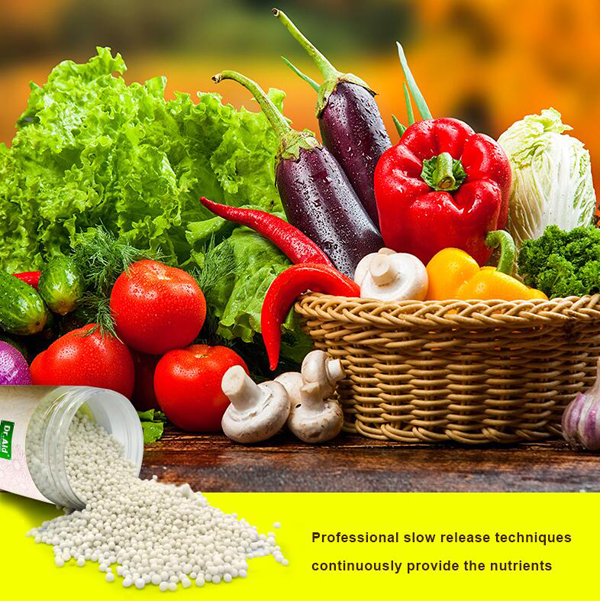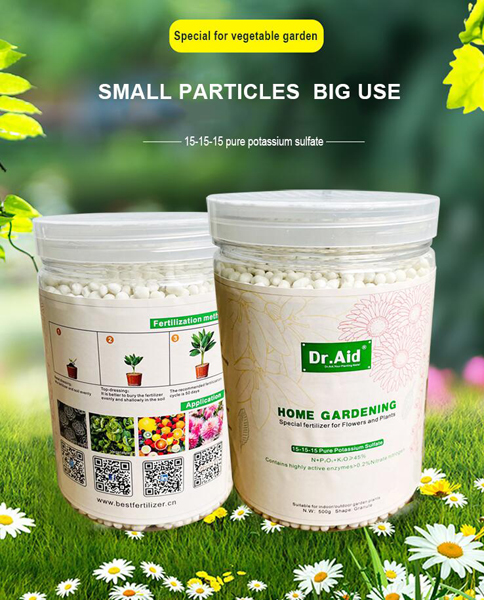How and when to fertilize your vegetable garden?
We use fertilizers to make our plants grow better, but when is the best time to fertilize? And how much of the kind of what fertilizer we apply? In one page we will cover the basics of using fertilizer in your garden.
We use fertilizers to make our plants grow better, but when is the best time to fertilize? And how much of the kind of what fertilizer we apply? In one page we will cover the basics of using fertilizer in your garden.
When to fertilize your garden
For edible crops, fertilizer is usually applied in the spring and mixed into the garden soil before planting. If you have sown seeds or planted seedlings, you can still use granular fertilizer gently around your plants (not liquid fertilizer, which can burn young roots). It doesn't need to go deep into the soil, just the top 3 to 5 inches. Then water in the fertilizer.
For perennial flowering plants, fertilize in the spring before growth begins. Wait until the ground is no longer frozen, only about a week before the date of the last frost. This growth regulators is less likely to be killed by the frost immediately.
While spring application is a good general rule, it is important to understand that plants really need help when they are growing the most.
1. For spring plantings of lettuce, arugula, kale and other leafy greens, this happens earlier.
2. Corn and squash grow rapidly in mid-summer. Therefore, for long-season crops such as corn, many gardeners apply a small amount of fertilizer at planting and then apply a large amount in early summer, before the foliage grows quickly.
3. Tomatoes and potatoes require additional fertilizer mid-season as they absorb and use available nutrients. When tomatoes begin to flower, switch to a low-nitrogen fertilizer to promote more flowers and fruit rather than foliage.
4. For perennials, the timing depends on the plant's growth cycle. For example, blueberries benefit when fertilized early in the budding season, while June strawberries benefit most when fertilized after harvest.
5. Ornamental trees, shrubs and perennials are usually fertilized at the beginning of the growing season because the dormancy period is interrupted.

How many types of fertilizers should I use?
Fertilizer bags will be labeled with a combination of numbers, such as 3-4-4 or 8-24-8, or 12-12-12. These three numbers refer to the three most important nutrients needed by plants: nitrogen (N), phosphorus (P) and potassium (K). The numbers refer to the percentage by weight of each nutrient in the bag. If you add up the numbers, they are the percentage of the total weight of the bag (the rest is just filler for application purposes). There may be other nutrients as well, including calcium, magnesium, iron and manganese.
To start your garden, use a general vegetable fertilizer. For vegetables, we use herbaceous plant foods numbered 3-4-4. For tomatoes, we use a separate 3-4-6 ratio fertilizer, which also contains calcium to help prevent flower rots.
Phosphorus is important because it is needed for root development and growth. Potassium enhances the plant's ability to resist disease. Note that nitrogen (first number) is low. Ever seen a tomato plant with lush foliage but no flowers or fruit? This is due to too much nitrogen, which will promote leafy growth.
â—® Vegetable crops need most of their nitrogen after they have grown significantly or have already started fruiting. Having too much N before this time will delay ripening and reduce flowering and yield. Your plants will also get their nitrogen from the decomposition of organic matter in the soil.
Later in the season, some plants benefit from a nitrogen side dressing (spread in the middle of the row). The plant's N needs often exceed the supply of the first two, requiring a N side dressing. However, this depends on the vegetable.
â—® Peas, beans, cucumbers and melons can benefit after flowering begins.
â—® Cabbage, cauliflower, and broccoli can benefit from more fertilizer three weeks after transplanting.
â—® Peppers, eggplant, and tomatoes can benefit from more after the first fruit ripens, and tomatoes can benefit from more about two weeks after picking the first tomatoes, and then again a month later.
â—® Sweet corn will benefit when plants are 8 to 10 inches tall and then tassels appear a week later.
â—® Spinach, kale, mustard and turnip greens will benefit when the plants are about one-third grown.
â—® Nitrogen should not be added to these vegetables: sweet potatoes, watermelon, carrots, beets, turnips, European bindweed, and lettuce.
The fertilizer bag should tell you how much to use per 1,000 square feet of garden area.
Organic vs. processed fertilizers
Fertilizer guidelines apply to processed fertilizers or organic fertilizers.
â–¶ Organic fertilizers are plant-derived materials that slowly release nutrients when broken down by microorganisms in the soil. Usually applied in granular form (scattered on the soil), most organic nutrients are slow-release, adding organic matter to the soil so you need to apply them almost infrequently. (In addition, they do not leach into and pollute waterways like many synthetic water-soluble fertilizers, which plants cannot fully absorb.) While most organic fertilizers are slow-release products, some release some of their fast-absorbing nutrients (such as animal manure, biosolids and fish milk).
â–¶ Processed fertilizers (also called "synthetic" or "chemical" fertilizers) are made from natural ingredients, such as phosphate (P) and sodium chloride (NaCl) and potassium chloride (KCl) salts, but these are refined to a higher concentration. Most (but not all) processed fertilizers are released quickly in a water-soluble form to deliver nutrients to the plant quickly, which is useful in some cases. (There are some processed fertilizers that are coated to slow release.)
Chemically, processed fertilizers and organic fertilizers are the same in terms of nutrients. Ideally, slow is the way to go. Slow-release granular fertilizers measure nutrients in a controlled, "digestible" and safe manner, as opposed to fast-acting, synthetic, water-soluble fertilizers, which are inherently overdosed.
On the cost side: While organic fertilizers can be more expensive up front than processed fertilizers, they are still usually economical for small gardens. Plus, you don't need to apply as often. When you're adding long-term benefits to your soil, organics outweigh the importance of processing.

How to apply liquid fertilizers
All water-soluble fertilizers are applied by dissolving the product in irrigation water and then applying it to the leaves of the plants and the soil around the plants.
Warning: Do not apply liquid fertilizer while planting! No matter how carefully you remove the plants from the container and place them in the ground, some root hairs will break off. Fertilizer will immediately reach the roots and enter them at the point of breakage, possibly "burning" them and causing further dieback.
Many gardeners wait 2 to 3 weeks after planting before applying a liquid solution; by then, the newly planted plants should have recovered from any root damage.
It is important to water plants thoroughly with water before applying liquid fertilizer to avoid burning the roots as the soil dries. Also, be careful that the fertilizer does dilute as directed or you may burn the leaves. If you have a watering system, you can use a syringe device to run fertilizer through the system.
For liquid sprays, it is best to use them early in the morning or late in the evening on dry days when the leaves have had time to absorb the material. Avoid extremely hot days when the foliage tends to burn.
How to apply granular fertilizer
For the first "starter" application of the season, spread granular fertilizer over a large area by hand or with a spreader. Or, if you have already planted, apply fertilizer next to your row. After applying all dry fertilizer, use a hoe or spade to pour or water 3 to 5 inches into the soil to help the fertilizer leach out into the plant's root zone. If your plants are already growing, cultivate gently to avoid damaging any roots.
During the growing season, lighter supplemental applications can be made to crop rows and perennial beds and the top inch of soil around the drip line of trees or shrubs. In general, applying granular fertilizer before a good rain is beneficial because it helps to get the fertilizer deep enough into the soil for the roots to reach it.
We hope you've learned a lot about fertilizer! If you have more questions about fertilizers, we'd be happy to answer them for you!